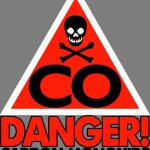19 Things to Know About Carbon Monoxide
19 Things to Know About Carbon Monoxide
What is Carbon Monoxide ? How dangerous is it?
Below are 19 important things to know about Carbon Monoxide in order to help keep you safe from harm.
- Carbon Monoxide is a dangerous gas. It can be very dangerous to your health, even fatal. It has no colour or odour, which makes it extremely difficult to be detected.
- Carbon Monoxide is produced when fuels such as gas, oil, coal or wood do not burn completely.
- When you inhale Carbon Monoxide, it enters into your bloodstream and mixes with the hemoglobin, which creates carboxyhemoglobin. When this happens your blood ceases to carry oxygen which causes the body’s tissue and cells to die.
- Approximately 200 people a year are admitted to hospital for Carbon Monoxide poisoning and of those about 40 cases lead to death.
- 10% – 15% of people who have suffered from Carbon Monoxide poisoning develop long-term complications such as heart and brain damage.
- Initially Carbon Monoxide poisoning symptoms are similar to those of the common flu, but without a fever, and is often mistaken for food poisoning.
- Common symptoms of Carbon Monoxide poisoning are headaches, nausea, vomiting, dizziness, stomach pain and confusion.
- The most common causes of a Carbon Monoxide leaks are household appliances (such a wood burning stoves) installed incorrectly, poorly maintained appliances and poor ventilation.
- The elderly, children, pregnant women and people with respiratory illness are at the “Highest Risk” of exposure to Carbon Monoxide.
- It is now illegal for a landlord to not include a Carbon Monoxide detector in a rental unit.
- For best results, Carbon Monoxide detectors should be located near appliance that could potentially leak.
- Black sooty marks on broilers or front covers are tell-tale signs of Carbon Monoxide production.
- Watch out for smoke filled rooms because of a blocked chimney as this can produce Carbon Monoxide.
- If your gas appliance is producing yellow flames instead of blue ones, this is an indication of a Carbon Monoxide problem.
- Be sure to have your chimney swept regularly to avoid any exposure.
- If you think you or someone else has been exposed to Carbon Monoxide, immediately turn off all appliances and evacuate immediately.
- Call 9-1-1
- Do not return until it is deemed safe.
- Seek immediate medical attention, advising physicians of possible exposure to Carbon Monoxide.



Follow Us!